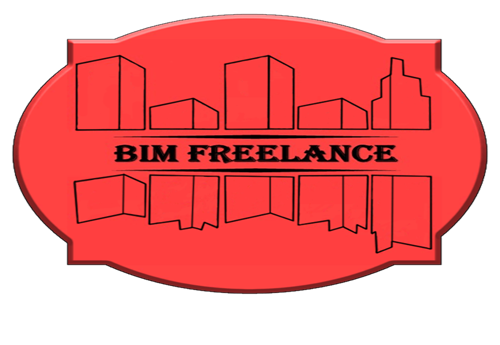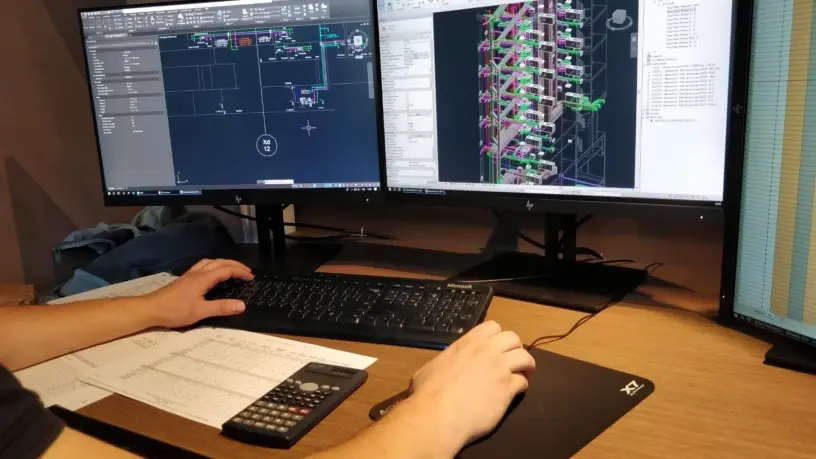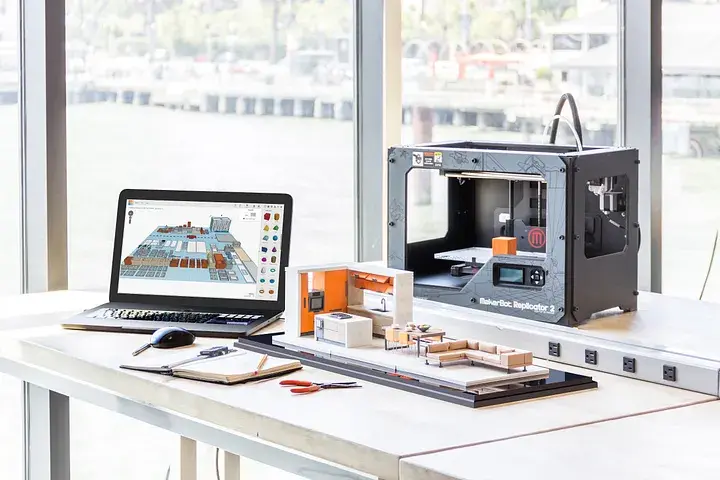Why Freelancing in BIM Is a Game-Changer for AEC Professionals

Table of Contents
In this article, we will understand how BIM is useful for freelancers and the steps you can take to start your freelancing journey in BIM.
Freelancing in BIM

Freelancing is a great career opportunity for those who don’t have traditional full-time employment as a part of their career plans. There are various opportunities for freelancers in the field of BIM, including Freelance BIM modelling, Independent BIM Consulting, and opening a BIM Consultancy Firm.
1. Freelance BIM Modellers
A BIM (Building Information Modeling) Modeller is a professional who creates, manages, and maintains digital 3D models of buildings and other structures. These 3D models contain detailed information about the building and are used throughout the building’s life cycle, from design to construction to operation and maintenance.
Freelance BIM Modellers are gaining popularity since BIM offers seamless online collaboration. The responsibilities of a BIM modeller include:
-
Creating and maintaining 3D models using BIM software,
-
Collaborating with architects, engineers, and other AECO members,
-
Ensuring the models are accurate and meet project requirements, and
-
Using the models to identify and resolve conflicts (clash detection) or issues during the design phase,
-
Manage BIM project benchmarks to meet project deadlines,
-
Contribute to the documentation of standards, best practices, and industry advancements.
Additionally, they use BIM to support quantity take-offs, cost estimation, facility management, and operations during the building’s lifecycle. They also ensure data consistency across different BIM models and disciplines.
2. BIM Consultants

A BIM Consultant, or a BIM Consultancy firm, is a person or an organisation that is external to the company workforce and helps construction companies implement BIM in their workflows. One can act as a solo consultant and guide the firms when required or set up a business (consultancy firm) with several BIM modellers.
The BIM consultancy team is responsible for helping project owners solve process and technological issues and deliver custom solutions and technology integrations for the AECO community. The main responsibilities of a BIM Consultant include:
-
The design and creation of BIM models, according to the different disciplines (architectural, structural engineering, HVAC etc.),
-
Ensuring an efficient exchange of information,
-
Management and revision of project documents,
-
Establishing a BIM project execution plan,
-
Establishing multi-disciplinary coordination workflows and standards,
-
Providing BIM training for contractors and employers,
-
Providing training for BIM coordinators. Creating coordination models, integrating multiple models into one model, participating in coordination meetings, assisting the stakeholders to organise and operate BIM team for a project,
-
Providing progress reports.
Interested in a career in BIM? Check out: 8 BIM-related Technical and Soft Skills You Need for an Excellent BIM Career
How is BIM useful for freelancers?
Now that we have understood the various freelancing opportunities in the AEC Industry in BIM, let’s find out how BIM is useful for freelancers.
Collaboration and Coordination

One of the greatest benefits of BIM is the collaboration and coordination it enables between designers, clients, and builders through the cloud. BIM helps all the stakeholders involved in a project to collaborate on a shared digital model. This helps all the stakeholders stay engaged throughout the process. Since freelancers are companies and individuals working remotely on the project, this real-time collaboration turns out to be extremely beneficial.
1. Integrated design:
BIM software facilitates integrated design by allowing architects, engineers, and other stakeholders to work together in a single digital model. This reduces the risk of errors and conflicts that may arise when multiple parties work on different parts of a project separately.
2. Improved communication:
BIM provides a common platform for stakeholders to share information, comments, and suggestions. This promotes open communication and reduces the likelihood of miscommunication or misunderstandings.
3. Real-time updates:
BIM allows stakeholders to view and access real-time project data, including design changes, schedules, and budgets. This helps stakeholders stay informed and make decisions based on the most up-to-date information.
4. Reduced errors and rework:
BIM software allows stakeholders to identify potential design issues early in the design process. This reduces the risk of errors and rework during the construction phase, which can save time and money.
5. Better resource management:
BIM helps stakeholders manage project resources more efficiently. This includes materials, equipment, and personnel. With BIM, stakeholders can monitor progress and allocate resources more effectively, reducing waste and increasing productivity.
Industry Exposure
Another benefit of learning BIM is the Industry Exposure it provides. Knowing the application of BIM ensures that you are at the forefront of innovation as you are often leading the digital revolution in projects. This helps freelancers get access to a global market and work on complex projects from the comfort of their home.
BIM enables freelancers to get:
1. Access to a global market:
BIM enables freelancers to work with clients from all over the world. As BIM is becoming the standard in the industry, it is essential for freelancers to be proficient in its use to remain competitive and marketable.
2. Access to more complex projects:
As BIM is becoming more widely used, it is also being used on more complex projects, such as infrastructure and large-scale building projects. Gaining experience in using BIM will enable freelancers to take on more challenging projects and gain industry exposure.
3. Opportunities for career advancement:
Gaining expertise in BIM can open up career opportunities for freelancers. As the demand for BIM expertise continues to grow, there will be a need for skilled professionals to lead and manage BIM projects. This presents opportunities for freelancers to develop new skills and advance their careers.
Monetary Benefits

BIM (Building Information Modeling) professionals are paid more than general architects due to several factors. These include:
1. Specialised expertise:
BIM professionals have specialised knowledge and skills in the use of BIM software and technologies. They are trained to create, manage and analyse data using BIM software, which is an essential tool for modern construction projects. This specialised expertise is highly valued in the industry and can command higher salaries.
2. Higher demand:
BIM professionals are in higher demand due to the increasing use of BIM in the construction industry. As the adoption of BIM continues to grow, the demand for professionals with BIM expertise is also increasing. This high demand for BIM professionals can lead to higher salaries.
3. Technical skills:
BIM professionals are expected to have a high level of technical proficiency in using BIM software and technologies. This technical expertise is highly valued in the industry and can command higher salaries.
Steps to Become a Freelance BIM Professional
1. Undergo Online BIM Training
The first step to becoming a freelance BIM professional is to gain knowledge and expertise in the field. A good understanding of the most in-demand BIM software like Revit, Navisworks, etc. is necessary for a flourishing career in BIM.
If you choose to work for yourself as an independent consultant, you will also need to develop other skills like project management, basic accounting, time management, and more. These will be valuable throughout your future career.
There are several online training courses available that provide in-depth knowledge on BIM and its applications. These courses cover topics such as BIM modelling, software tools, project management, and collaboration. Completing these courses can help you to gain a better understanding of the industry and the skills required to succeed as a BIM professional.
For places where you can learn BIM online, check out: 6 Best BIM Courses With Placements
2. Build a Portfolio

Building the right portfolio is crucial to acquiring freelance opportunities in BIM. A portfolio showcases your skills and experience and gives potential clients an idea of your capabilities. Your portfolio should include examples of BIM models and drawings that you have created, as well as any relevant experience in the field. Building a strong portfolio takes time and effort, but it can be a powerful tool for attracting clients and demonstrating your expertise.
Interested in building an amazing BIM Portfolio? check out: 5 Effective Tips To Create An Impressive BIM Portfolio That Will Help You Land A Great Job
3. Build your Network

Your most valuable asset on your journey to becoming a successful freelancer in BIM will be your connections. You will need to know a list of potential clients in order to secure regular work and generate a reliable income.
The easiest way to do this is through social media. You could use LinkedIn to connect with other professionals in the industry. Make sure that your profile is up to date with your experience and qualifications highlighted. Other social media sites like Facebook and Instagram can also be useful to reach new clients.
Attending industry events is another great way to connect with other professionals and reach out to potential clients to build relationships.
Overall, networking can help you to gain new clients, stay up-to-date on industry trends and developments, and find new opportunities to grow your business.
Looking to learn BIM today and start your freelancing journey? Join Novatr’s BIM Professional Course and master the technical skills with the relevant software while polishing up your soft skills. The course is taught by industry experts exploring real-world RIBA-structured projects.
Need to know more about BIM? Read our Comprehensive BIM Guide and check out the Resources page for more industry and career insights.

 Thanks for connecting!
Thanks for connecting!


.png)
.jpeg)

.jpg)




